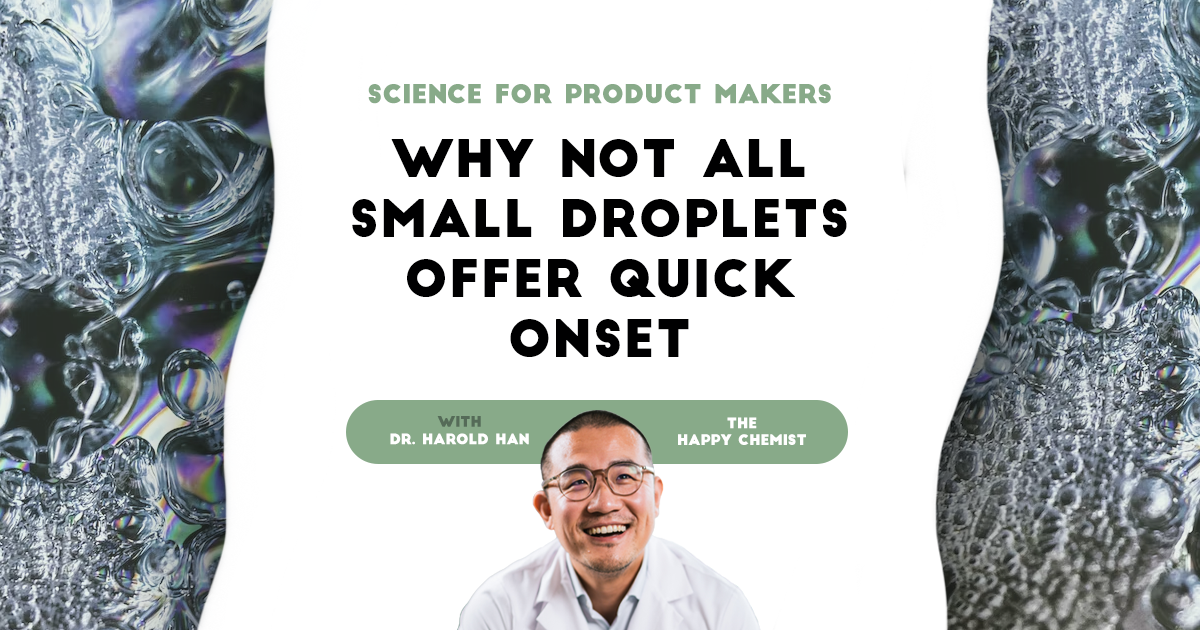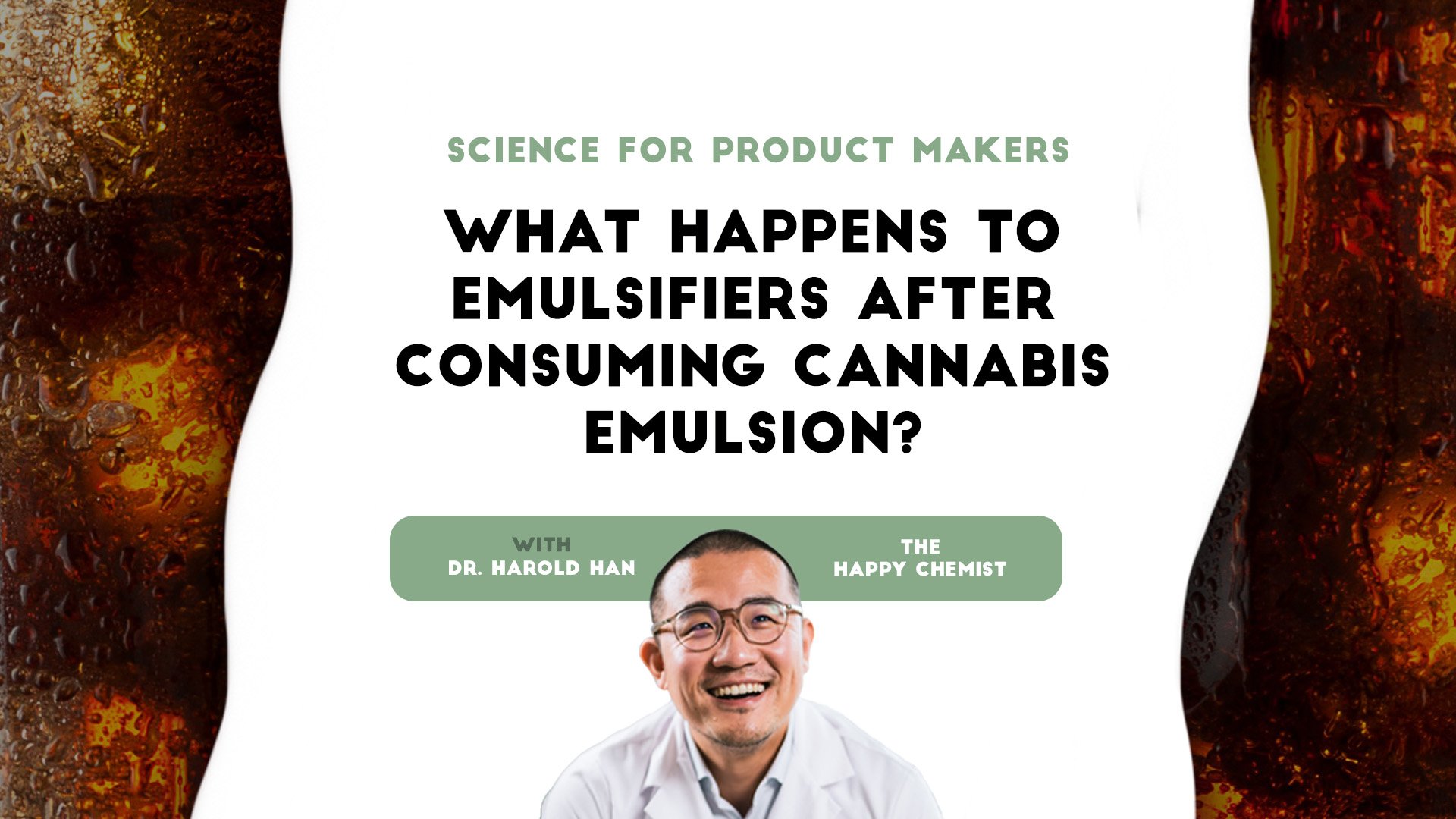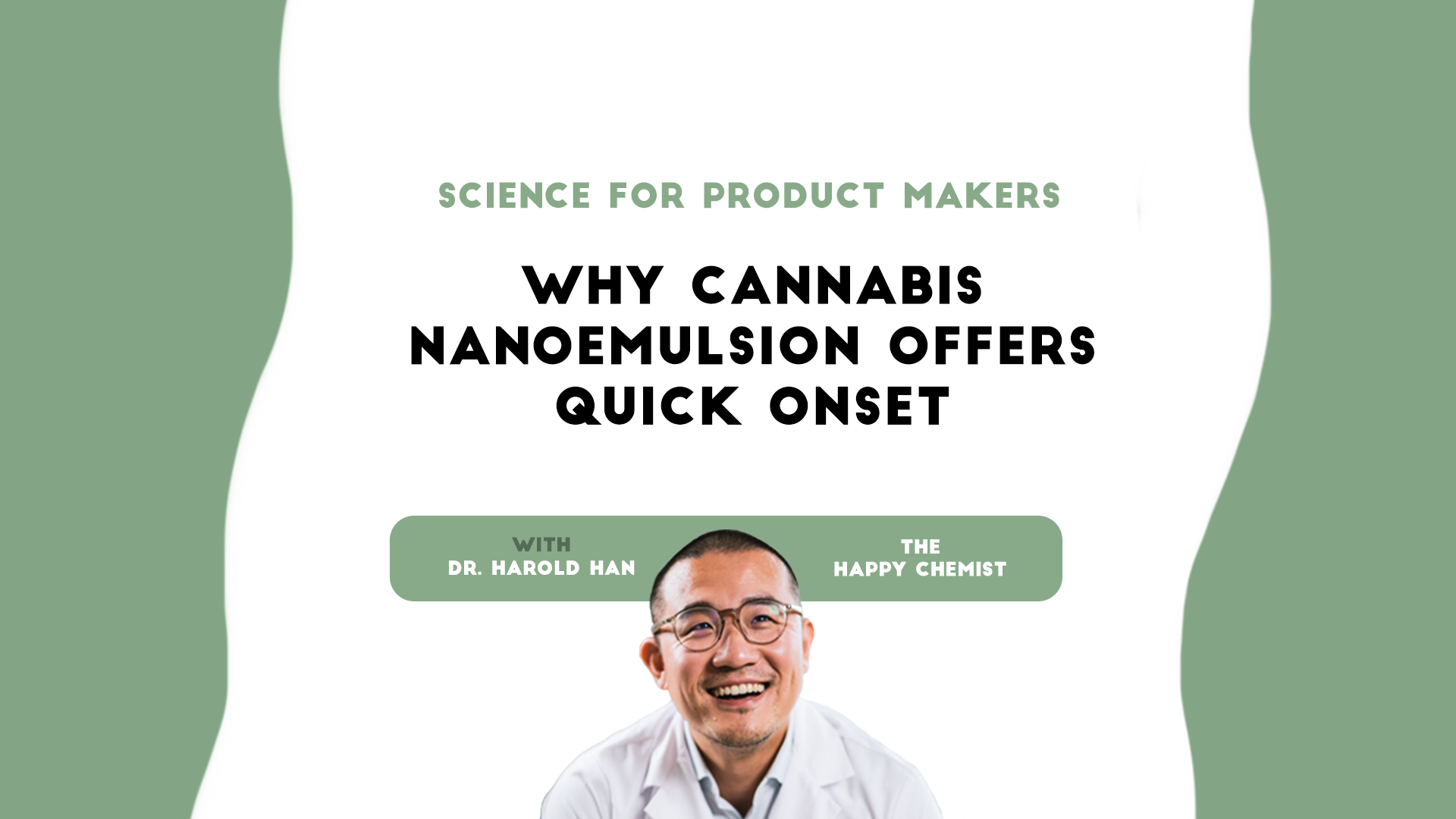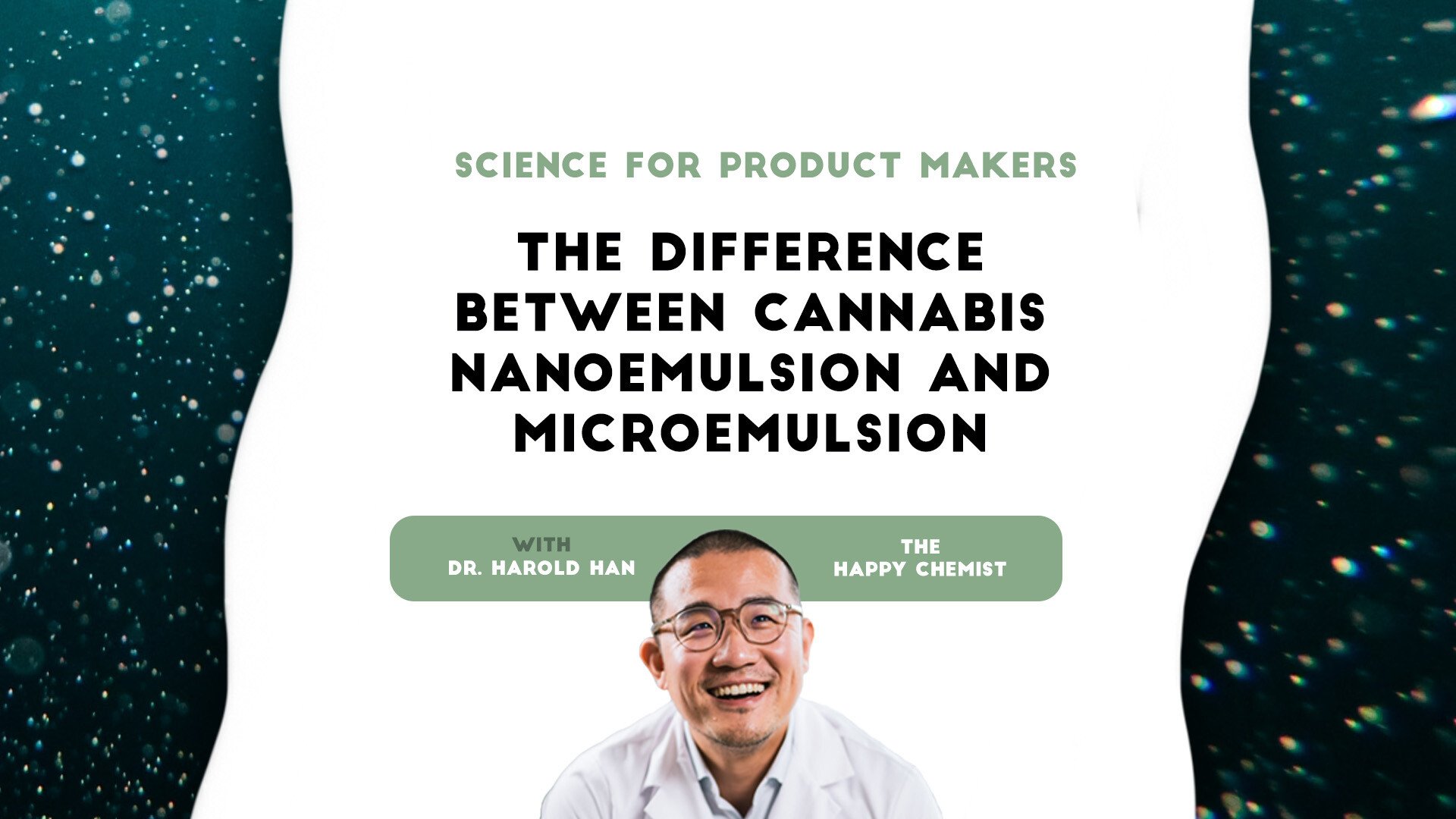Science for product makers: What happens to emulsifiers after consuming cannabis emulsion?
This post is also published as an article on Harold's LinkedIn profile. You can read and leave comments here. Have you wondered where the...
3 min read
 Dr. Harold Han - "The Happy Chemist"
:
6/28/24 4:25 PM
Dr. Harold Han - "The Happy Chemist"
:
6/28/24 4:25 PM

This post is also published as an article on Harold's LinkedIn profile. You can read and leave comments here.
In my last post, we learned that a cannabis nanoemulsions’ small droplet size provides a much easier pathway to the formation of mixed micelles in the human gut. The quick formation of mixed micelles translates to faster THC absorption and is the main reason for its quick onset. This may lead you to believe that cannabis emulsions would have the same effect, but that’s not the case!
How emulsion droplet size may change in the digestive process
First, it’s important to understand that small droplets in a beverage do not guarantee small droplets in the small intestine, where most of the hydrophobic substances get absorbed.
Our digestive system consists of organs (mouth, stomach, small intestine and large intestine) that have very different pH, enzyme activity, salts, and mechanical agitation conditions. When the beverage flows from the oral cavity (pH 6.8-7.5) into the stomach (pH 1.5-2.0), the sudden reduction of pH and increase of enzyme activity may disrupt certain types of emulsifiers and make them ineffective. This would cause the oil droplets to merge and form much bigger droplets inside the stomach. When those bigger droplets reach the small intestine, it takes more effort to form mixed micelles potentially slowing onset.

What types of emulsifiers have this tendency of droplet size increase in the stomach?
To identify these emulsifiers and prove this theory, I will reference two papers by Prof. Julian David McClements that provide clear guidelines.
Let’s examine protein-based emulsifiers, such as whey protein or caseinate. These emulsifiers may be digested by enzymes or lose their charge in the stomach, which means they are no longer capable of stabilizing droplets. As a result, the small oil droplets merge together and form large clusters (flocs), thus increasing their resistance to digestion when they enter the small intestine.
The study: proving protein-based emulsifiers do not maintain their droplet size in stomach conditions
Prof. McClements’ group designed the in vitro study, where they created solutions that simulate the chemical environments of the mouth, stomach and intestine. The emulsions made with whey protein and caseinate were introduced into each condition and the particle sizes were measured. (J. Agric. Food Chem. 2018, 66, 9761−9769)
The initial droplet sizes for both caseinate and whey protein were around ~150 nm and quickly increased to ~3000-4000 nm in the stomach and stabilized to ~2000 nm in the small intestine. That is a more than 13 times increase of droplet size from the initial state!

Droplet sizes (in red) of caseinate and whey protein based emulsions merge and become larger after exposure to different simulated GIT stages.¹
Gum acacia and quillaja extract as emulsifiers
Thanks to Prof. McClements’ work in another paper (Food Research International 137 (2020) 109739), gum acacia and quillaja extract were also evaluated in the same method as whey protein and caseinate. The study found that when emulsion is formulated and produced correctly, gum acacia and quillaja extract can retain their droplet size throughout the GI tract.

This chart records the change in droplet size of different emulsifiers in different digestive organs. ²
The takeaway
To sum it up, quick onset is directly related to the droplet size when an emulsion enters the small intestine — not its original size in the beverage. Some emulsifiers can break down, causing droplets to merge and become bigger in the GI tract, making it more difficult to absorb the THC. Because of that, it’s important to select emulsifiers that will retain their small droplet size when digested. An in vitro study on droplet size change in simulated gastrointestinal tract can confirm if the product can deliver on the onset promise.
Dr. Harold Han — the “Happy Chemist” — combines his storied background in emulsion chemistry and science with curiosity and fascination in the rapidly growing cannabis industry. Developing nano and micro emulsions his entire career, Harold holds a Ph.D in Surface Chemistry from NYU and is the author of multiple patents in emulsion chemistry.
As the Chief Science Officer at Vertosa, Harold spearheads the company’s development of industry-leading and customized active ingredients for infused product makers, offering pre-suspended aqueous solutions to create incredibly homogenous and stable products while maximizing bioavailability, clarity, and taste.
To learn more about the science of cannabis, check out Harold’s Happy Chemist videos.
References
¹ Liang, Li, et al. “Influence of Dairy Emulsifier Type and Lipid Droplet Size on Gastrointestinal Fate of Model Emulsions: In Vitro Digestion Study.” Journal of Agricultural and Food Chemistry, vol. 66, no. 37, 2018, pp. 9761–9769., https://doi.org/10.1021/acs.jafc.8b02959.
² Tan, Yunbing, et al. “Factors Impacting Lipid Digestion and Nutraceutical Bioaccessibility Assessed by Standardized Gastrointestinal Model (INFOGEST): Emulsifier Type.” Food Research International, vol. 137, 2020, p. 109739., https://doi.org/10.1016/j.foodres.2020.109739.

This post is also published as an article on Harold's LinkedIn profile. You can read and leave comments here. Have you wondered where the...

This post is also published as an article on Harold's LinkedIn profile. You can read and leave comments here. Our industry generally agrees that...

This post is also published as an article on Harold's LinkedIn profile. You can read and leave comments here.